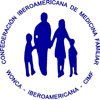Does number of health workers at health sub-centres affect health outcomes?
Resumo
Objetivos: This paper examines health worker availability at HSCs and how the number of health workers is associated with maternal, child and family planning service use - frequency of antenatal care, proportion of safe deliveries among mothers, postnatal care, modern contraceptive use and child immunization.
Metodologia ou descrição da experiência: We use data from the third wave of District Level Household and Facility Survey, the largest ever nation-wide survey of households and health facilities. We first evaluate existing human situation of human resources at HSCs. To explore the associations between maternal, child and family planning service and health worker availability, we use linear and two-level binary logistic regression. The results of binary logistic results are present in the form of odds with p-values and confidence intervals.
Resultados: The odds of having an ANC increase more than thrice if an HSC has four workers in position compared to the one with only one worker. Similarly, the odds of having four or more antenatal check-ups are almost double compared to HSCs with only one worker. However, in case of safe delivery, the effect of number of workers is not very large. Similarly, the likelihood of use of modern contraceptive also does not grow with an increase in number of workers. Having 4 workers at HSC reduces the odds of getting a postnatal check-up compared to HSC with only one worker. However, the likelihood of full immunization among children significantly increases with increase in the number of health workers.
Conclusões ou hipóteses: It was found that despite controlling for individual and village level factors, the number of health workers was significantly associated with health services use, except postnatal care. Looking at the overburdened health workers at grass root level and poor health outcomes, government should increase the number of health workers at HSC as suggested by IPHS (Indian Public Health Standards).
Palavras-chave
Texto completo:
PDF (English)Apontamentos
- Não há apontamentos.
Este periódico é de responsabilidade das associações:
Apoio institucional:







